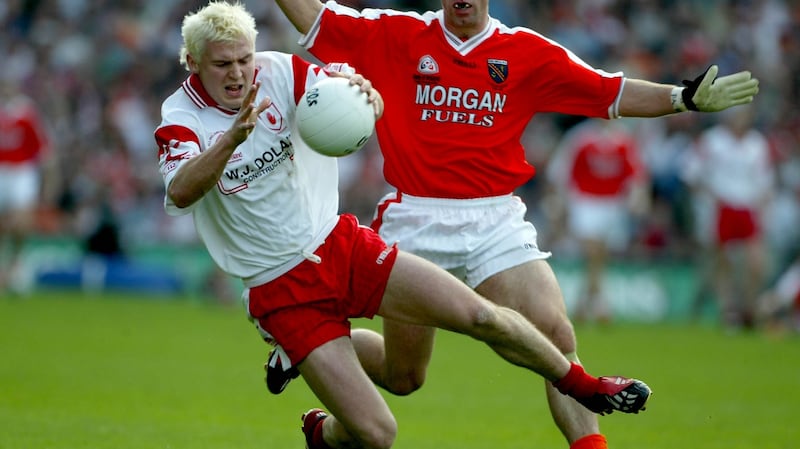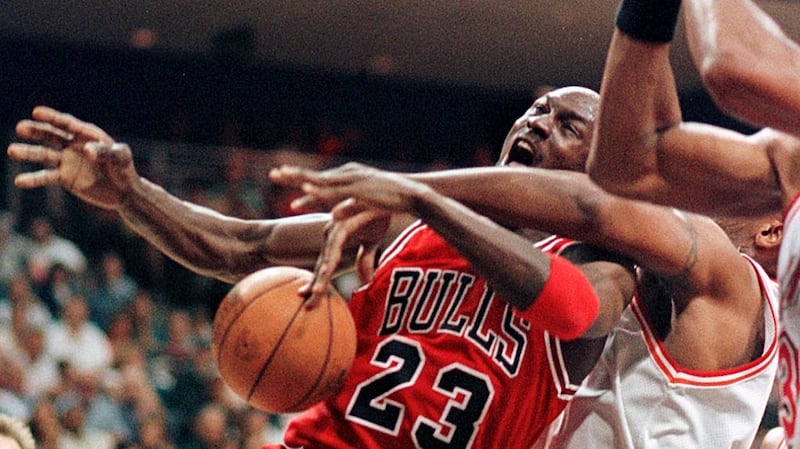It is the age of luxury for sports fans.
This weekend alone, three of the most prolific scorers in their respective sports – Jason Tatum of the Boston Celtics, Joe Canning of the Galway hurlers and David Clifford, the jewel in the Kerry football crown – are accessible with the flick of the remote control.
The trio will never meet. They are brilliant at what they do. Two are amateur while Tatum has signed a five-year contract extension for around $195 million (€160 million). What they have in common is they are leading figures in sports which have been portrayed as losing some essence or vitality; of being in crisis.
Because Gaelic football is the dominant and most popular sport in Ireland, pundits and public alike feel free to criticise and hammer its perceived shortcomings.
Now that Conor McGregor is in Gatsby’s mansion, what will his legacy be?
Forget Harry, Ronnie the Potter’s wizardry still capable of casting a magic spell
Keith Duggan: Dick Hoyt’s heroic feats with his son a study in raw courage
Tokyo 2021 could yet thrill the world with a female face presiding over it
There was a broad school of thought that Gaelic football was “ruined” by the dominance of a defensive, attritional game favoured by the Ulster teams. It was fine as long as they were content to batter away and be happy with the Anglo-Celt Cup. But once they started winning All-Irelands, the melodramatic notion of the “death” of Gaelic football was vocalised.

Nobody said it out loud but the meeting of Tyrone and Armagh in the 2003 All-Ireland final was the nadir. Just when order was restored – Kerry back winning All-Irelands, Dublin getting their house in order in Leinster – Donegal came screaming out of nowhere seemingly intent on holding teams scoreless for entire halves.
The 2011 All-Ireland semi-final, in which the new Ulster champions held Dublin to two points in the first half, was interpreted as a kind of shaming. In truth it revealed a lack of faith in the game by some of its most well-known practitioners.
During the same period, hurling was generally spoken of as the eighth wonder of the world. Nobody ever had a bad word to say about hurling – least of all its pundits, who spoke of summer afternoon games as if they had just witnessed the Third Coming. Hurling people never tired of assuring the world of how fast and amazing the game was; that it was the best. They could never quite get over themselves.
The truth was always somewhere in between. There has always been a minority who enjoyed the austerity and essential darkness of those Ulster games when points were so difficult to come by they took on the significance of heavyweight punches – while an actual goal felt like witnessing a storming of the citadel.
There were days when you’d emerge from the latest festival of hate in Clones and hear of the crackling, fizzing reports of a gluttonous feast of scoring in the hurling championship.
And the Sunday Game reviews were glowing about the hurling contests even as the velocity of scores in summer hurling games climbed skywards. And sometimes it felt as though hurling teams had become content to trade scores. And because of that, hurling bore comparison to a sport to which it is never paired: NBA basketball.
One of the most common complaints levelled against Gaelic football by its custodians was that it had become “like basketball”. They almost never knew what they meant by this: it was just an attempt to convey their frustration with the number of hand passes clocked up by teams intent on keeping possession.
Shot clock
It's true that basketball involves passing the ball via the hands: after all, you're not allowed to kick the ball. (As Diego Maradona once noted, while declaring Michael Jordan a marvel: but I do that with my feet.) What the critics damning Gaelic football failed to notice is that in basketball, a team can only have possession for 24 seconds before they attempt to score. After that, the shot clock expires and the other team gets the ball.
What they also failed to notice was that once a team brings the ball across the halfway line, they cannot retreat to their own half of the court again. Either of those rules would have an instant and radical impact on the approach to Gaelic football. Instead, they blamed the teams or the coaches.
Being decisive about how to develop the game has always been a strength of NBA basketball. In 1979, for instance, they introduced the three-point line to encourage distance shooting. And look at the game now.
However, basketball has new problems of its own. Tonight, when Boston play the Brooklyn Nets, if you stay up late you’ll see an exhibition of long-range shooting and dazzling, athletic moves to the basket. What you won’t see is the stuff that dominated the NBA in the 80s and 90s – reckless fouls, frequent brawls and a relentless physical confrontation between players.
What happened?
Two things. The first is that the NBA instructed its officials to enforce the “hand-check” rule. What seemed like a tweak completely transformed the game. For decades defenders had been allowed to use their hands and forearms to physically impede and annoy and pressure the player with the ball; now these infringements were called as fouls.

It made life much easier for the attacker. Look at old videos of Michael Jordan or Isiah Thomas driving to the basket and they are often victims of common assault in comparison to the clean, untouched drives of contemporary stars. The 90s stars, when asked now if LeBron James or Steph Curry could have thrived in their era, just about maintain a polite silence. But, just about.
Still, the change worked for the NBA. The scores became more frequent. Ostensibly, the game became a more pleasing spectacle for the fans. But, slowly at first and then all at once, people began to notice what had been lost. They began to miss the wild days.
It seems as though hurling has reached that similar dilemma this week. There is a sudden fretting that the wild unpredictable streak has disappeared from the old sport. And maybe an awareness that the scoring is sometimes so abundant that it is overwhelming.
It’s the same with basketball: the once outrageous long-range shots from four and five feet beyond the three point arc have become every-night fodder. The spectacular has lost its gloss.
In elite basketball and hurling, the skill levels are phenomenal. Coaching efficiency and technique has contributed to this. Coaching has literally been the game-changer over the past 30 years.
Extreme example
Rugby is the most extreme example of this. What was dreamed up as a game of elusion has become a game of concerted collision. Maverick individual flair has been all but eradicated by the rehearsed and percentage-driven coaching playbook. Creative players are discouraged from trying something, from taking a risk. Because taking a risk is . . . risky.
All of this stuff has found its way onto the Gaelic fields and now it has affected hurling. Hit up YouTube for hurling games from the 1980s and 1990s and NBA games of the same era. What you notice, apart from the fashion, is the looseness of play, the comparative slowness and also an underlying anarchic spirit; a sense that the teams were making it up as they went along. That’s because they were.
The big revolution, in all elite sports, lies in the attempt by coaches to plot out and shape the game before it has been played. (There’s a good reason for this: jobs.)
And whatever the sport, it can look precise and rehearsed and a little sterile – particularly when played in empty stadiums.
But there is no panic. Sooner or later, some bright spark will decide that anarchy and mayhem and creative free-flow is the way forward for his or her team. No matter the sport, the game will always find its way. The game will always be the game.















